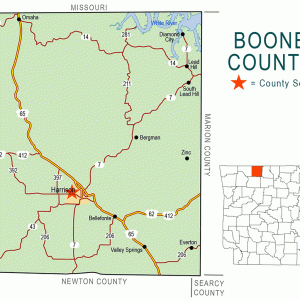calsfoundation@cals.org
Lead Hill (Boone County)
| Latitude and Longitude: | 36º25’11″N 092º54’54″W |
| Elevation: | 853 feet |
| Area: | 0.58 square miles (2020 Census) |
| Population: | 274 (2020 Census) |
| Incorporation Date: | December 8, 1915 |
Historical Population as per the U.S. Census:
|
1810 |
1820 |
1830 |
1840 |
1850 |
1860 |
1870 |
1880 |
1890 |
1900 |
|
– |
– |
– |
– |
– |
– |
– |
– |
– |
– |
|
1910 |
1920 |
1930 |
1940 |
1950 |
1960 |
1970 |
1980 |
1990 |
2000 |
|
– |
218 |
268 |
194 |
110 |
102 |
143 |
247 |
283 |
287 |
|
2010 |
2020 |
|
|
|
|
|
|
|
|
|
271 |
274 |
|
|
|
|
|
|
|
|
As its name indicates, Lead Hill began as a mining town on the upper White River shortly after the end of the Civil War. In the middle of the twentieth century, the community had to be relocated due to the creation of Bull Shoals Lake. Since that time, the town has relied largely on the tourist industry.
At the time of the Louisiana Purchase in 1803, the area that would become northern Arkansas was hunting ground for the Osage, who lived farther north at the time. The land was ceded to the United States by a series of treaties, but the Ozark Plateau did not draw as many settlers as the river valleys or the rich farmland of southern Arkansas. The first settler of European descent in the Lead Hill area was Buck Coker, who is thought to have arrived in 1812. Few others arrived until after the Civil War, although a pine log school evidently had been built there before the war.
Several small smelters were established in the late 1860s, although the immediate surroundings of Lead Hill had only small deposits of lead and zinc that offered a modest return. A store was established in 1868, and a water mill and cotton gin were erected the same year. A second store opened in 1869, the same year in which Boone County was established, and a Masonic lodge was built in 1870, with school classes held on the first floor. Citizens filed papers to incorporate the town in 1873.
By 1880, the town was flourishing. A Baptist church and a hotel had been built, and the newspaper the Lead Hill Bugle was being published. Residents of Lead Hill included six merchants, four doctors, two blacksmiths, two preachers, a seamstress, a cabinet maker, a druggist, a carpenter, a miller, and a shoemaker. A carding factory for wool and cotton was established before the end of the nineteenth century.
The town continued to prosper after the turn of the century. A five-piece brass band was organized in 1912, and the Bank of Lead Hill opened in 1914. A Methodist church and a Christian Church (Disciples of Christ) were established. The Lead Hill News was published from 1915 to 1918 but then was sold. In 1924, a new school building was dedicated, with five teachers instructing the students. Under the leadership of William Erwin Halbrook, Boone County consolidated its seventy-four school districts into only eight, as eight smaller schools were consolidated into the Lead Hill district.
The Great Depression struck Boone County hard. The Bank of Lead Hill closed in 1931. Nevertheless, the residents persevered through hard times. First Baptist Church was organized, using the old Methodist church building, and a Church of God was established around 1930. In 1936, Lead Hill continued to support several stores, the school, a flour mill, a grist mill, a cotton gin, and a canning factory.
The life of the town was threatened after World War II by the decision to build Bull Shoals Dam and to create Bull Shoals Lake. Construction of the dam began in 1947, with the entire community of Lead Hill situated within the boundaries of the incipient lake. Some buildings were moved to higher ground, but many historic structures were abandoned and destroyed. The move occupied three years, from 1949 to 1951. The location of the new town was a hill northwest of the old town site, which was locally known as Ku Klux Hill because the Ku Klux Klan had burned a cross on that hill around 1930. Not all the relocated families and businesses chose to live at the new location of Lead Hill. South Lead Hill (Boone County) and Diamond City (Boone County) were also created at this time.
The project that created Bull Shoals Dam and Bull Shoals Lake was dedicated in 1952; President Harry S. Truman spoke at the dedication, which was held at the dam site in Marion County. The new lake quickly became a tourist destination, used for boating, swimming, and fishing, and Lead Hill benefited from the tourist industry. In the twenty-first century, the town acquired a new post office, a branch bank, and a medical clinic. The Lead Hill school system consists of an elementary school and a high school; in 2011, it served 390 students. The town also features an industrial park for small industry. In 2010, a proposed twenty-year project began near Lead Hill, creating a medieval castle using the same techniques and materials that were used in thirteenth-century France; the project had ceased by 2012.
For additional information:
Boone County Historical and Railroad Society, Inc. History of Boone County, Arkansas. Paducah, KY: Turner Publishing Company, 1998.
Sugarloaf Celebration. https://sugarloafcelebration.weebly.com/ (accessed August 4, 2022).
“Welcome to Lead Hill, Arkansas.” http://www.leadhill.net (accessed June 18, 2022).
Steven Teske
CALS Encyclopedia of Arkansas
 Boone County Map
Boone County Map 




Comments
No comments on this entry yet.